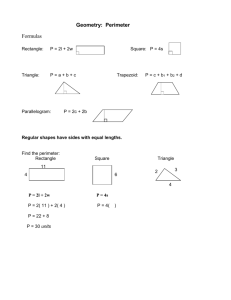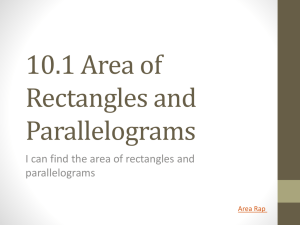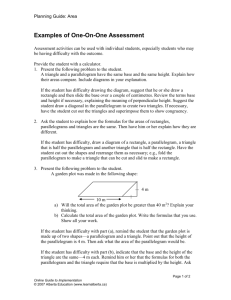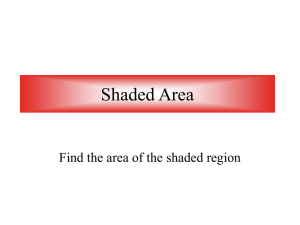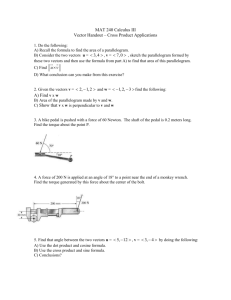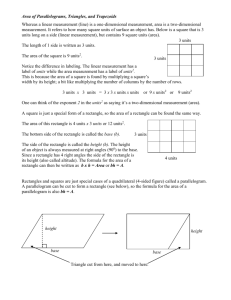GeoGebra Area Investigations
advertisement
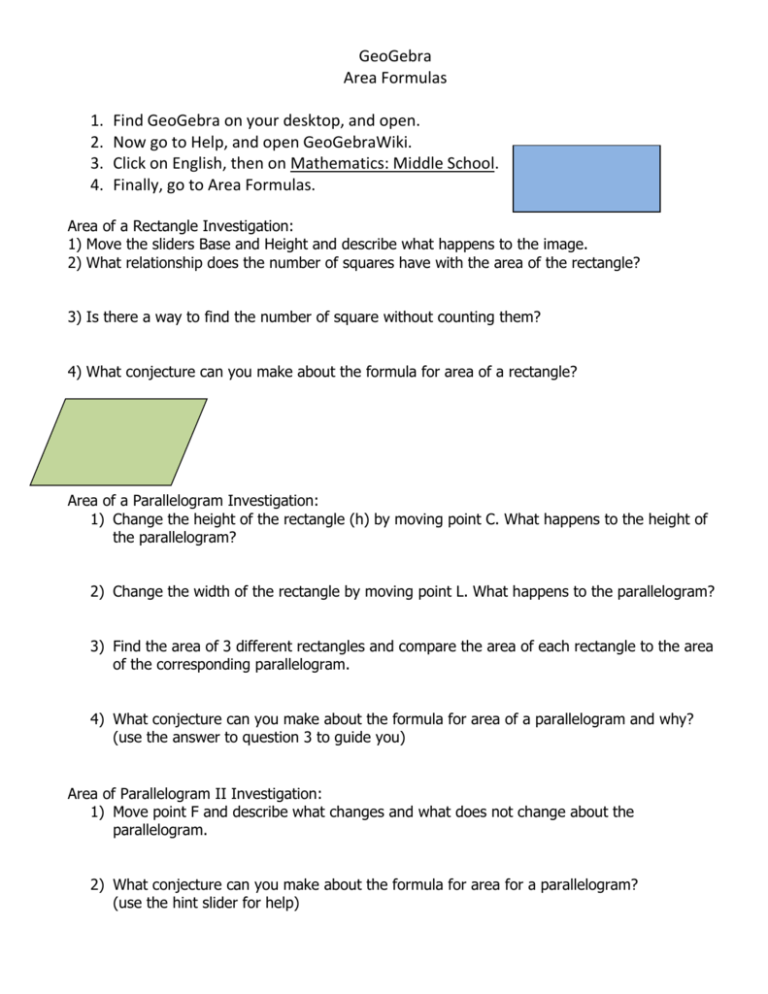
GeoGebra Area Formulas 1. 2. 3. 4. Find GeoGebra on your desktop, and open. Now go to Help, and open GeoGebraWiki. Click on English, then on Mathematics: Middle School. Finally, go to Area Formulas. Area of a Rectangle Investigation: 1) Move the sliders Base and Height and describe what happens to the image. 2) What relationship does the number of squares have with the area of the rectangle? 3) Is there a way to find the number of square without counting them? 4) What conjecture can you make about the formula for area of a rectangle? Area of a Parallelogram Investigation: 1) Change the height of the rectangle (h) by moving point C. What happens to the height of the parallelogram? 2) Change the width of the rectangle by moving point L. What happens to the parallelogram? 3) Find the area of 3 different rectangles and compare the area of each rectangle to the area of the corresponding parallelogram. 4) What conjecture can you make about the formula for area of a parallelogram and why? (use the answer to question 3 to guide you) Area of Parallelogram II Investigation: 1) Move point F and describe what changes and what does not change about the parallelogram. 2) What conjecture can you make about the formula for area for a parallelogram? (use the hint slider for help) 3) Test the conjecture from question 2 with 5 different base and height combinations, record your results. Area of a Triangle Investigation: 1) Move point D so that the triangle is a right triangle, then move the Hint slider, describe the end result. 2) Move point D to make an obtuse triangle and move the Hint slider, describe the end result. (perform this task for an acute triangle as well) 3) What conjecture can you make about the formula for area of a triangle? Test this conjecture with 5 different base and height combinations and record your results. Area of a Trapezoid Investigation: 1) Move the slider and describe the final picture and how it relates to the trapezoid. 2) Does the relationship from question 1 apply to all trapezoids? (Move point B and the slider to help you) 3) Using the labels on the trapezoid to make a formula for the area of a trapezoid. (Relate it to a parallelogram) Area of a Circle Investigation: 1) Move the slider above the circle and describe what happens to the circle step by step. 2) Make a conjecture about the formula for the area of a circle and show how you develop this formula. (move the slider named hint to help you) Take some time looking at the other area formulas as well as those for volume and surface area. How might this tool change your instructional approach to teaching area, volume, and/or surface area?

